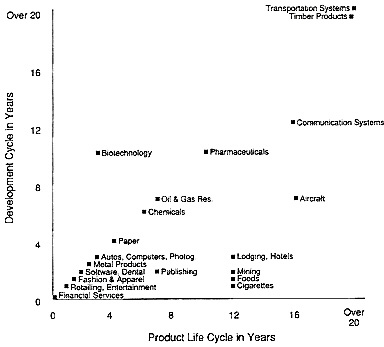Table of ContentsHow What Is Derivative N Finance can Save You Time, Stress, and Money.What Is Derivative Instruments In Finance Can Be Fun For AnyoneThe 10-Second Trick For What Are Derivative Instruments In FinanceSome Ideas on What Is A Derivative In Finance Examples You Need To Know
However, if a stock's cost is above the strike cost at expiration, the put will be worthless and the sellerthe alternative writergets to keep the premium as the choice ends. If the stock's cost is below the strike cost at expiration, the call will be worthless and the call seller will keep the premium.
These are referred to as American-style alternatives, however their usage and early exercise are rare. As the above examples illustrate, derivatives can be an useful tool for organisations and investors alike. They supply a method to secure rates, hedge against unfavorable movements in rates, and reduce risksoften for a limited expense.
On the drawback, derivatives are tough to worth due to the fact that they are based on the rate of another possession. The dangers for OTC derivatives include counter-party threats that are hard to anticipate or value too. what is considered a "derivative work" finance data. Most derivatives are likewise sensitive to modifications in the quantity of time to expiration, the expense of holding the hidden possession, and rate of interest.
Pros Lock in prices Hedge against threat Can be leveraged Diversify portfolio Cons Difficult to value Subject to counterparty default (if OTC) Complex to comprehend Conscious supply and require factors Also, considering that the acquired itself has no intrinsic valueits worth comes just from the underlying assetit is susceptible to market sentiment and market threat - what is considered a derivative work finance.
Finally, derivatives are usually leveraged instruments, and utilizing leverage cuts both methods. While it can increase the rate of return it also makes losses mount quicker. Many acquired instruments are leveraged. That implies a percentage of capital is needed to have an interest in a large quantity of worth in the underlying asset.
Financial instrument In financing, a derivative is an agreement that derives its value from the performance of an underlying entity. This underlying entity can be an possession, index, or rates of interest, and is typically merely called the "underlying". Derivatives can be utilized for a variety of functions, including http://stephenanab624.unblog.fr/2020/09/05/the-facts-about-what-is-a-yankee-bond-in-finance-revealed/ guaranteeing versus rate movements (hedging), increasing exposure to price motions for speculation or getting access to otherwise hard-to-trade properties or markets.
What Is Derivative In Finance - The Facts
The majority of derivatives are traded over the counter (off-exchange) or on an exchange such as the Chicago Mercantile Exchange, while the majority of insurance contracts have actually developed into a separate industry. In the United States, after the financial crisis of 20072009, there has actually been increased pressure to move derivatives to trade on exchanges. Derivatives are one of the three primary categories of financial instruments, the other two being equity (i.e., stocks or shares) and financial obligation (i.e., bonds and home loans).
Bucket shops, outlawed in 1936, are a more current historic example. Derivatives are contracts in between two celebrations that define conditions (especially the dates, resulting values and meanings of the underlying variables, the celebrations' contractual commitments, and the notional amount) under which payments are to be made between the parties. The possessions include commodities, stocks, bonds, rates of interest and currencies, but they can also be other derivatives, which adds another layer of intricacy to proper assessment.
From the economic point of view, monetary derivatives are cash streams that are conditioned stochastically and discounted to present worth. The market danger inherent in the hidden property is attached to the financial derivative through contractual arrangements and hence can be traded independently. The underlying asset does not need to be gotten.
This likewise offers a considerable quantity of flexibility relating to the contract design. That contractual flexibility enables derivative designers to customize the participation in the efficiency of the underlying possession practically arbitrarily. Therefore, the participation in the market value of the underlying can be efficiently weaker, stronger (leverage effect), or executed as inverse.
There are two groups of acquired agreements: the independently traded over the counter (OTC) derivatives such as swaps that do not go through an exchange or other intermediary, and exchange-traded derivatives (ETD) that are traded through specialized derivatives exchanges or other exchanges - what is considered a derivative work finance. Derivatives are more common in the modern era, however their origins trace back a number of centuries.
Derivatives are broadly categorized by the relationship between the hidden asset and the derivative (such as forward, choice, swap); the kind of underlying possession (such as equity derivatives, foreign exchange derivatives, rate of interest derivatives, commodity derivatives, or credit derivatives); the market in which they trade (such as exchange-traded or non-prescription); and their pay-off profile.

Excitement About What Is Considered A "Derivative Work" Finance Data

Lock products (such as swaps, futures, or forwards) obligate the contractual celebrations to the terms over the life of the contract. Option products (such as rates of interest swaps) supply the buyer the right, but not the commitment to get in the agreement under the terms specified. Derivatives can be utilized either for threat management (i.e.
making a financial "wager"). This distinction is very important because the previous is a sensible aspect of operations and financial management for numerous firms across numerous industries; the latter deals managers and financiers a risky chance to increase earnings, which might not be correctly disclosed to stakeholders. In addition to lots of other monetary services and products, derivatives reform is a component of the DoddFrank Wall Street Reform and Consumer Defense Act of 2010.
To offer an idea of the size of the derivative market, has reported that since June 2011, the over the counter (OTC) derivatives market totaled up to approximately $700 trillion, and the size of the marketplace traded on exchanges totaled an additional $83 trillion. For the 4th quarter 2017 the European Securities Market Authority approximated the size of European derivatives market at a size of 660 trillion with 74 million impressive agreements.
For instance, in 2010, while the aggregate of OTC derivatives exceeded $600 trillion, the value of the marketplace was estimated to be much lower, at $21 trillion. The credit-risk equivalent of the acquired contracts was approximated at $3.3 trillion. Still, even these scaled-down figures represent big quantities of money. For point of view, the spending plan for overall expenditure of the United States government throughout 2012 was $3.5 trillion, and the total existing worth of the U.S.
On the other hand, the world annual Gdp has to do with $65 trillion. A minimum of for one type of derivative, Credit Default Swaps (CDS), for which the fundamental danger is thought about high [], the higher, small value stays pertinent. It was this type of derivative that investment magnate Warren Buffett described in his popular 2002 speech in which he alerted against "monetary weapons of mass destruction".
Derivatives are utilized for the following: Hedge or to alleviate threat in the underlying, by getting in into a derivative agreement whose worth relocations in the opposite direction to their underlying position and cancels part or all of it out Create choice ability where the value of the derivative is connected to a specific condition or occasion (e.g., the underlying reaching a particular cost level) Get exposure to the underlying where it is not possible to sell the underlying (e.g., weather derivatives) Provide take advantage of (or tailoring), such that a small movement in the underlying worth can trigger a big difference in the worth of the derivative Speculate and earn a profit if the worth of the underlying asset moves the method they anticipate (e.g.
What Does What Is Derivative N Finance Do?
For example, an equity swap allows a financier to get stable payments, e.g. based upon LIBOR rate, while preventing paying capital gains tax and keeping the stock. For arbitraging purpose, permitting a riskless profit by at the same time participating in transactions into 2 or more markets. Lock items are in theory valued at absolutely no at the time of execution and therefore do not usually need an up-front exchange between the celebrations.
Importantly, either party is for that reason exposed to the credit quality of its counterparty and is interested in safeguarding itself in an event of default. Option items have instant worth at the start due to the fact that they offer specified defense (intrinsic worth) over a given time duration (time value). One common type of option product familiar to numerous customers is insurance coverage for houses and automobiles.